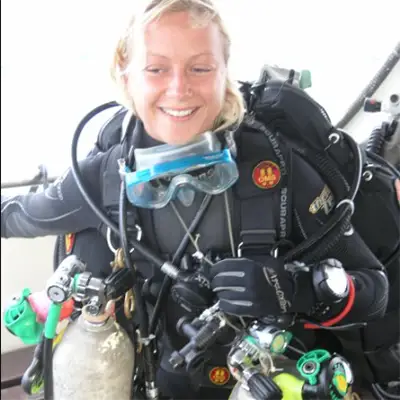To stay safe when diving, it’s important to understand what the dangers are and how to mitigate your risk.
Dangerous Sea Creatures
This is probably the section most beginner scuba divers think of first when the issue of safety is mentioned. There are other things connected with safety in scuba diving that should be addressed ahead of dangerous sea creatures, but let’s get this out of the way first.
The ocean is filled with amazing marine life, and while there is nothing in the ocean that naturally predates on humans, there are some creatures that can cause serious injury and even death.
To avoid any potential problems with marine life, a little knowledge goes a long way. If you know the creatures that you need to be aware of, then you can learn a little about their behavior and habitat. Knowing what to watch out for makes creatures easier to recognize. You’ll also be able to take steps to protect yourself, you’ll know how to respond to an encounter, and know what to do in an emergency.
There are some steps you can take on every dive:
- Don’t touch anything!
- Don’t pick anything up.
- Don’t harass anything.
- Wear a full suit and maintain good buoyancy.
- If your dive is a shore entry, shuffle your feet to scare away bottom dwellers and avoid stepping on them.
- Remove shiny and dangling jewelry as these can be mistaken for silvery fish by hungry hunters.
- Be aware that ascent lines, decent lines, buoy lines, and even reel lines can snag jellyfish tentacles, and they still sting even when they are no longer attached to the jellyfish.
These measures will save you from inadvertently coming into contact with anything poisonous or provoking defensive behavior.
Below is a summary of some key marine life you should be aware of:
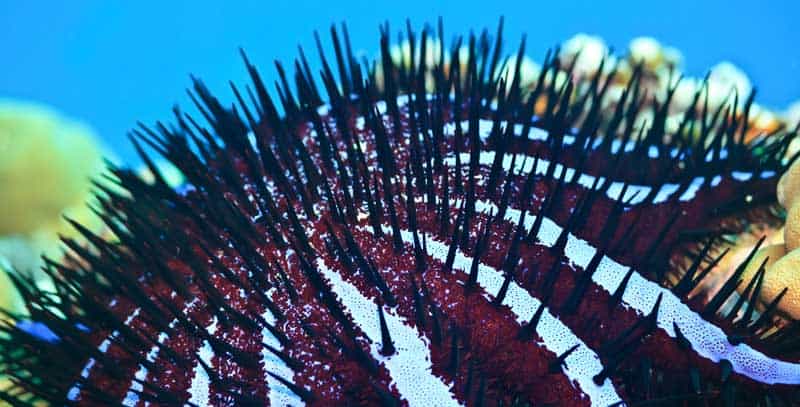 Crown Of Thorns Starfish
Crown Of Thorns Starfish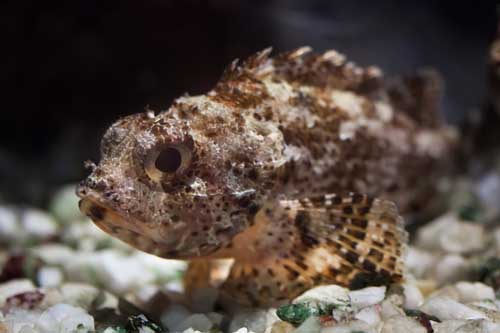 Scorpion fish
Scorpion fish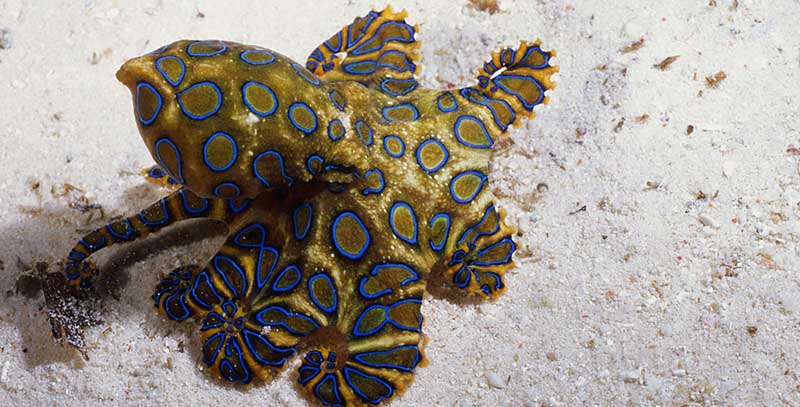 blue ringed octopus
blue ringed octopus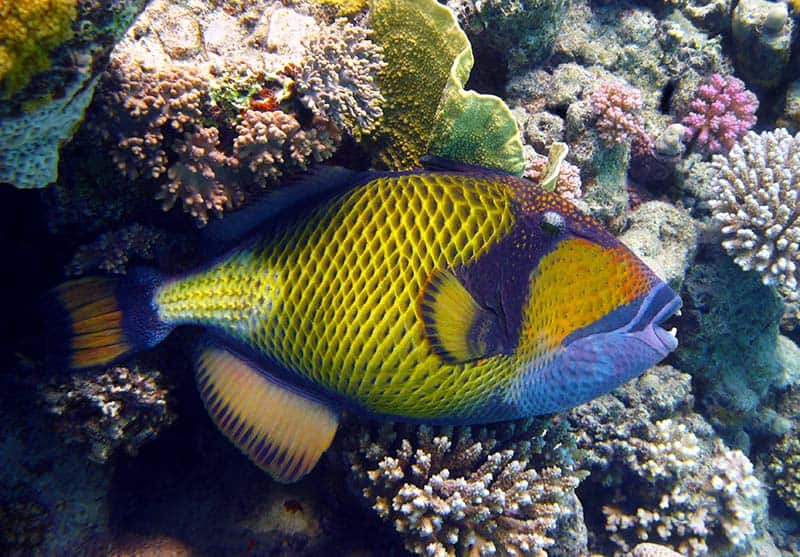 Titan Triggerfish
Titan Triggerfish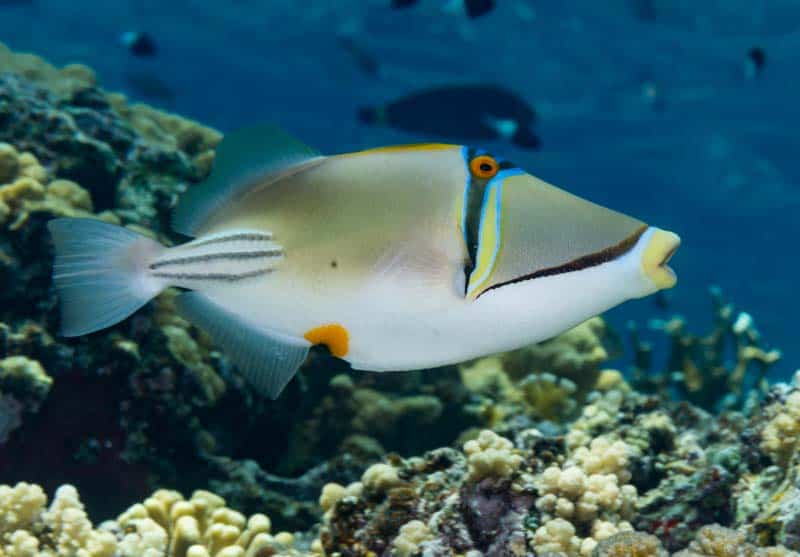 Picasso Triggerfish
Picasso Triggerfish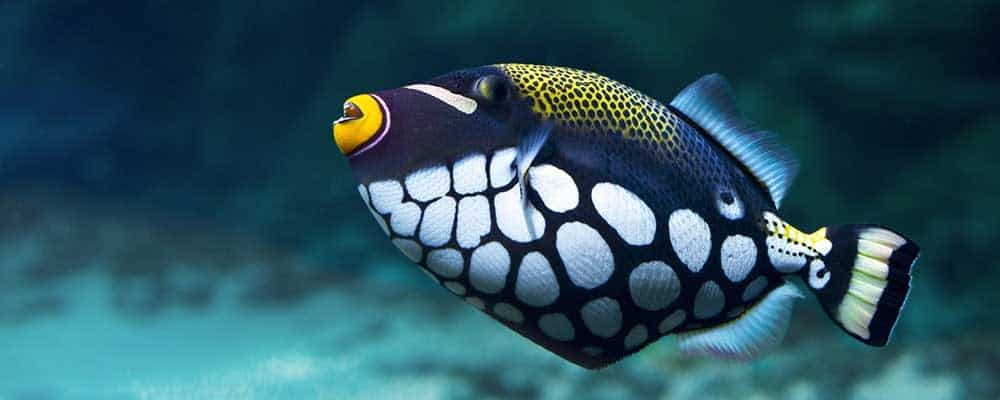 Triggerfish
Triggerfish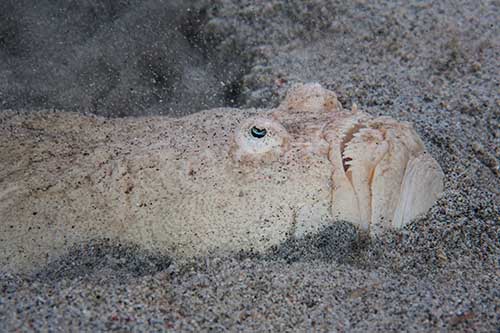 Stargazer fish
Stargazer fish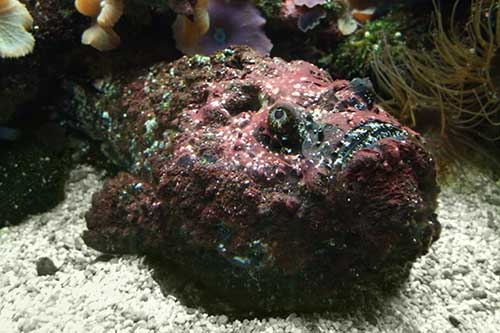 Stonefish
Stonefish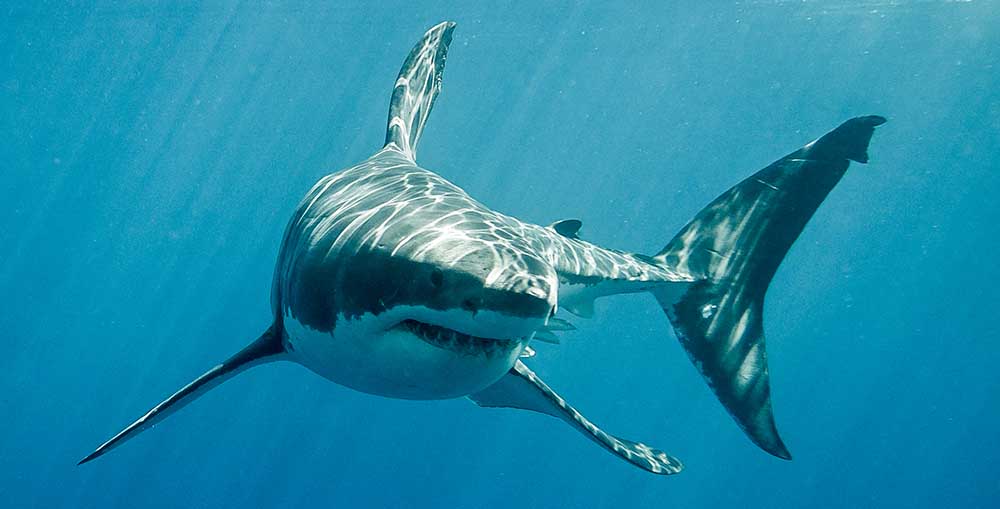 Great white shark
Great white shark
- Sharks have a bad reputation, but unprovoked attacks on scuba divers are extremely rare. Spearfishing and surface water activities carry more risk.
- Triggerfish can be aggressively territorial. The Titan Triggerfish is particularly feisty and will chase, barge, and bite if you don’t swim out of its area.
- Blue Ringed Octopus have deadly venom which is only transferred by touch. The poison will paralyze, and there is no antidote. Patients are put on life support until the toxin is metabolized.
- Scorpionfish, stonefish and stargazers camouflage, and stonefish and stargazers can bury themselves too. The venom is on their spines. It’s very painful but not fatal.
- Lionfish have poisonous spines too, and even though they don’t hide, they can be hard to see against the reef.
- Sea snakes can be venomous, but they’re not aggressive, they are very inquisitive though. Remain calm if approached, once it’s had a look, it will move on.
- Fire coral burns and causes skin irritation.
- Stingrays have a venomous barb in their tail but will only use it in defense.
- Jellyfish stings can be painful and even fatal but not all jellyfish sting. The most dangerous are the Box jellyfish, the Portuguese Man o’ War, and the Irukandji.
- Flower Urchins and cone shells are extremely venomous if handled.
- Crown of Thorns Starfish, if touched, will cause extreme pain.
- Leopard seals and saltwater crocodiles can both be deadly, but you are unlikely to accidentally encounter either species.
Night Diving SAFETY
Diving at night is a great experience. You get to see nocturnal activity and marine life, which is often quite different from what you will encounter during the day.
While your gut reaction might be that night diving is more dangerous and scarier, the only real difference between diving during the daytime is that it’s dark. To be safe, there are some things that you do need to consider.
 Nudibranch
Nudibranch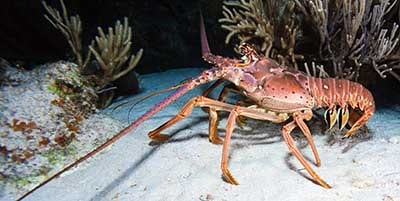 Lobster
Lobster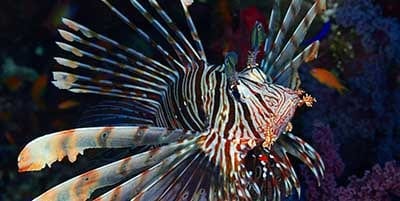 Lionfish
Lionfish Barracuda
Barracuda
Do I Need Training for a Night Dive?
You don’t need a night diving certification to dive at night, but it is a good idea. Making a night dive as part of your advanced training or even taking a night diving specialty will allow you to take part in this new experience under the supervision of an experienced instructor.
Safety Gear for Night Diving
Torches and Lights
The recommendation is to have one main torch and a backup. If your main torch fails, you can switch to your backup and end the dive. Continuing the dive with your backup is not recommended.
There are other locations on which you might want to attach a light;
- under the boat
- on the downline
- on your SMB
- on your tank valve
Reflectors
It’s a good idea to choose an SMB with a reflective strip so that it’s easily visible in torchlight at night. If yours doesn’t have one, you can shine your torchlight through it which will make it glow. For extra visibility, you can buy a reflector kit for your BCD.
Gauges
Before you hop in for a night check that you know how to illuminate your gauges. Most pressure gauges will glow for a while after you have ‘juiced them up’ by shining your torch on them. This technique is the same for most compasses too.
Dive computers have different methods of illumination, so check your manual for information.
Communicating During A Night Dive
Clear communication is critical on any dive. Night diving complicates hand signals because you have one hand holding the torch, and of course, you need to illuminate your hand signals for your dive buddy to see them.
For night diving, you might decide to show each other your gauges rather than signaling air pressure. For an ok signal, you can illuminate one hand, or you can move your torch in a circle. The same is true for signaling that something is wrong; illuminate your hand or move your torch beam horizontally side to side.
Whatever you decide to do is ok, remember to discuss it before you dive, so there is no confusion underwater.
Entry and Exits For Night Diving
The key safety aspect for safe entries and exits is to use your torch to see where you are going. Check your entry area and look for lights. When ascending, make sure you check the water in a 360-degree circle around you. Shining your torch up will allow you to see your way to the surface. Your light will also be seen on the surface and will illuminate your SMB too.
Wreck Diving SAFETY
Wrecks offer an interesting alternative to coral reefs. Their history gives another depth to your dive; some are sunk intentionally to create an artificial reef and new habitats.
Do I Need Training for Wreck Diving?
You do not need a wreck qualification to dive on a wreck; you do need one to penetrate a wreck. The problem here is a temptation because there’s no one to stop you. It’s all too easy to be lured into an entrance on a wreck. Looks simple enough but it’s also surprisingly easy to stir up the visibility, get lost, disorientated, snagged, and stuck.
There are many things that a diver should do for their own safety but the key safety point for wreck diving is not to enter unless you are qualified. If you have trained in the required techniques; remember your training, make sure you have the proper kit, and don’t go beyond your limits.
How to Prepare for a Wreck Dive
As with any dive, a little preparation will not only improve your safety, but will also enhance your experience. If you’re diving a new site and in a new location, it’s always a great idea to dive with a local operator. If that’s not possible, speak to divers who know the wreck well, read dive blogs and forums, and consult dive guides. Look for;
- A map or diagram with depths and special features and buoy lines
- The wreck’s history
- Conditions (current, visibility, etc.)
- Marine life (so you know what to look for and what to be aware of)
- Hazardous points
What Gear Do I Need For a Wreck Dive?
For touring the outside of the wreck make sure you have the following;
Gloves
To get to most wrecks, you will follow a line. These lines are often permanent, which means barnacles can grow on them, and these are surprisingly sharp. Further, there are instances where you might need to hold on to the wreck, and for this, you will want protection on your hands.
Long Wetsuit
In tropical locations, you might be tempted to dive in shorts and a rash vest or a shorty wetsuit. There’s nothing wrong with diving like this, but you do give up the extra protection that a long wetsuit offers. Unless the wreck was sunk intentionally, it will often have sharp edges and jagged corners. Permanent downlines also attract growth and snag jellyfish tentacles.
Torch
Even if you are not going inside a wreck, a dive light is a great idea. It will allow you to see inside. Wrecks are often reasonably deep too so the extra light will paint the wreck in color as you pass.
Knife
You should have a knife with you as standard on any dive. Wrecks are prone to fishing line and nets, so it’s particularly important for your safety on a wreck dive.
Tips For Dealing With Strong Currents
If there is current or water movement on a wreck, there are some things you can do to make your dive easier.
Hold the line
If there is a line present, use it. Otherwise, you will waste energy and gas kicking.
Use the wreck
Think of current like the wind. You can hide from the wind, and you can hide from the current. Take it slowly and be aware of changes.
Disturbances
A wreck will disrupt the water flow, and this can cause eddies and usual ebbs and flows. Water movement can cause unnerving disturbances around openings in wrecks. These movements can feel like the wreck is sucking you in, so be aware of your environment if there is water movement present.
Awareness When Diving On Wrecks
Some wrecks lie perfectly upright, but many don’t. Even a slight angle on a wreck can be strangely disorientating. Don’t rely on what your eyes and brain are telling you. Watch your gauges because it’s very easy to follow the wreck beyond your planned depth.
Wrecks often have overhead hazards even outside. To avoid nasty bumps on your head, be fully aware of what is around you.

